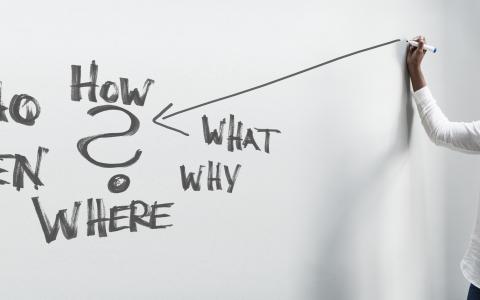
(Fortune) - Economists are unhappy with persistently high inflation and how the Federal Reserve is addressing it. Since the start of 2022, the Fed has hiked interest rates eight times, most recently in February.
At that time, the Fed’s chief, Jerome Powell, sounded cautiously optimistic by saying that a “disinflationary process” had started, although there was a long way to go and that smaller hikes could be expected in the coming months. Investors were excited by the news. Fast forward to a month later on Tuesday: Powell signaled that further increases are on the horizon. That news rattled investors, who sent key stock indexes down, as they braced for tighter economic conditions.
A leading economist who has repeatedly said the Fed’s goal of reducing inflation to 2% is unrealistic now thinks the central bank’s mixed messaging threatens financial and economic stability.
“It really shouldn’t be this way, and it doesn’t need to be,” Mohamed El-Erian, president of Queens’ College at the University of Cambridge, wrote Tuesday in an op-ed for Bloomberg. “Yet once again remarks by Federal Reserve Chair Jerome Powell fueled considerable volatility in markets that could risk both economic well-being and financial stability.”
El-Erian’s commentary comes after a Senate panel on Tuesday where Powell indicated that robust economic data including a blowout January jobs report could mean “the ultimate level of interest rates is likely to be higher than previously anticipated.”
Investors and market watchers had initially hoped the Fed would begin lowering interest rates by the end of 2023 after a mild quarter basis-point increase during the next Federal Open Market Committee (FOMC) meeting in March. But now, Powell may consider a bigger hike to quell inflation.
This expectation was immediately reflected in the markets, according to El-Erian. “Rather than overwhelmingly pricing in an increase of 25 basis points as previously signaled by the Fed, the markets moved the odds in favor of 50 points, which would reverse the downward shift in hikes the central bank prematurely made just a month ago,” he wrote after stocks across the board dipped after Powell’s address.
El-Erian thinks the Fed's confusing messaging has left its leaders with a tough choice. They must either confirm what the market is pricing in by implementing a 50 basis point hike even if that means reneging on the Fed’s forward guidance of smaller rate hikes in February, or follow through with the earlier guidance at the cost of slowing the response to inflation. Either path could hurt the Fed’s reputation, El-Erian added.
“The alternative of continuing as is increases the challenges to a global economy facing an important green transition, changing globalization and supply chains, geopolitical uncertainties, and a worsening inequality of income, wealth and opportunity,” El-Erian wrote.
The economist has been vocal about the inflation rate remaining “sticky” at 4%, well above the Fed’s target of 2%. The inflation rate in January was 6.4%.
But El-Erian isn’t alone in being critical of the Fed’s messaging about inflation. Ken Griffin, chief of hedge fund Citadel, pointed out in an interview Tuesday that Powell should “say less” about inflation. “The variance of the message over the last couple of weeks has been incredibly counterproductive,” Griffin told Bloomberg.
Other experts have said that the economy will get worse before it gets better. Former Treasury Secretary Larry Summers has repeatedly said the fight against inflation would “more likely than not” unleash a recession. On Tuesday, he said that interest rates may continue to rise until the Fed sees inflation clearly drop.
Historic data also points to how recessions have rarely been avoided after interest rates touched levels as high as they are currently. It’s possible that the Fed defies that, according to Philip Jefferson, a member of the Fed’s Board of Governors.
“History is useful, but it can only tell us so much, particularly in situations without historical precedent,” Jefferson said. “The current situation is different from past episodes in at least four ways.” Those include supply chain disruptions, a drop in the number of people working or seeking jobs, the Fed’s increased credibility to fight inflation, and its concerted efforts to reign in on high inflation rates.
But strong economic data has done the U.S. economy a favor—now, some economists are expecting a recession in the U.S. to begin later in 2023 despite high interest rates as the economy continues to show resilience.
This story was originally featured on Fortune.com
By Prarthana Prakash



